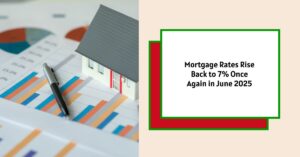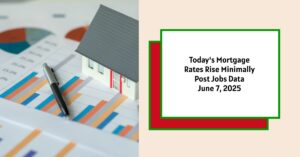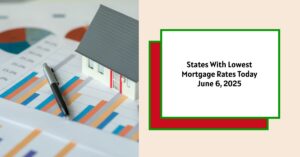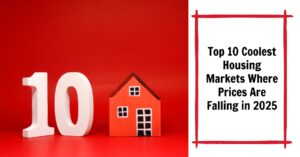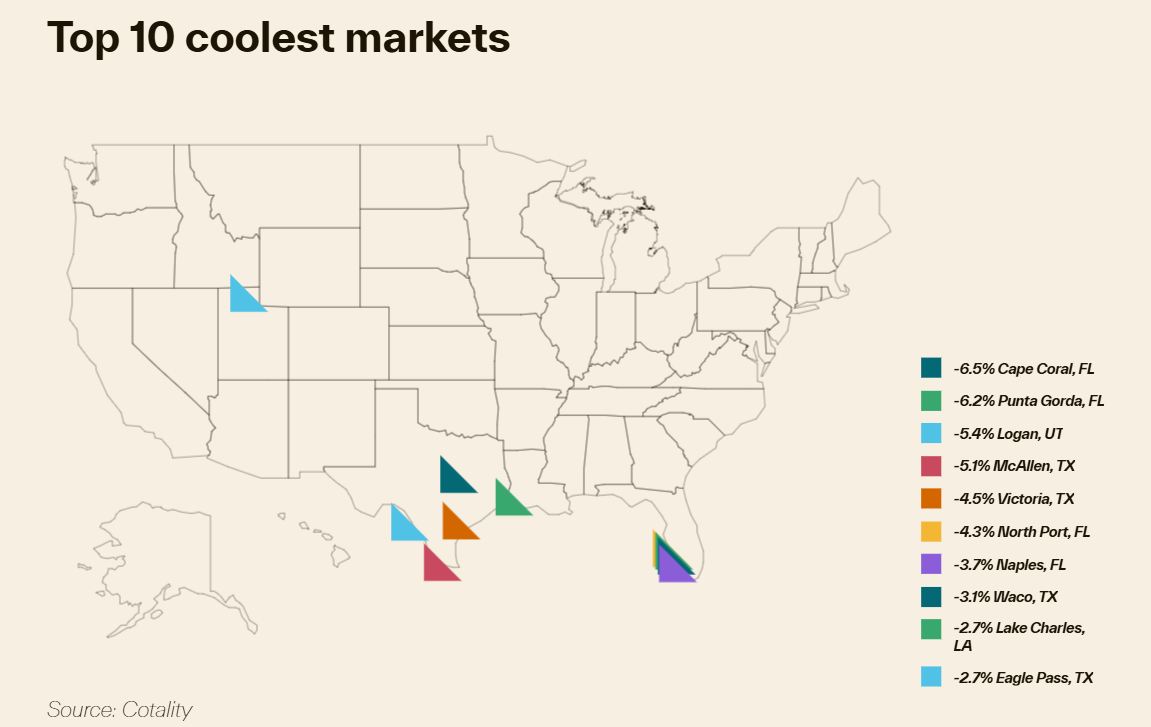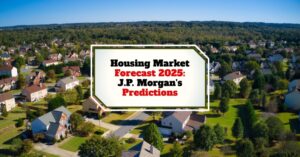Well, here we are again. As of June 7, 2025, the national average for a 30-year fixed mortgage rate has climbed to 7.04%. This news likely brings a wave of concern for anyone looking to buy a home or refinance their existing mortgage. I know I felt a jolt when I saw the latest figures from Zillow.
It feels like just yesterday we were talking about rates hovering a bit lower, and now, here we are with that familiar 7% mark looming large. So, what exactly is going on, and more importantly, what does this mean for you and the housing market? Let's dive in and really break this down.
Mortgage Rates Rise Back to 7% Once Again in June 2025
Understanding the Current Spike
According to the data from Zillow, this latest increase is a continuation of a trend we've been watching. The national average for the 30-year fixed mortgage edged up by 2 basis points from 7.02% the previous day, and it's up 3 basis points from the 7.01% average just a week prior. It's not just the 30-year fixed either. The 15-year fixed rate has also seen an increase, jumping to 6.15%, up from 6.12%. Interestingly, the 5-year ARM saw a slight dip to 7.78%.
The report also points to a key driver behind this upward pressure: the bond market. A robust jobs report on Friday gave a boost to the stock market, but it also caused bond market yields to rise. Specifically, the 10-year Treasury yield, which is often a good indicator of where mortgage rates are heading, saw a significant increase of over 2.5% on Friday alone. As I've learned over the years, when these Treasury yields go up, mortgage rates often follow suit. It looks like that trend is holding true this week.
Breaking Down the Different Loan Types
It's important to remember that not all mortgage rates are created equal. Here's a closer look at how different loan types are currently trending, based on the latest data:
Conforming Loans:
| PROGRAM | RATE | 1W CHANGE | APR | 1W CHANGE |
|---|---|---|---|---|
| 30-Year Fixed Rate | 7.04% | up 0.03% | 7.52% | up 0.05% |
| 20-Year Fixed Rate | 6.83% | down 0.14% | 7.35% | down 0.04% |
| 15-Year Fixed Rate | 6.15% | up 0.09% | 6.47% | up 0.11% |
| 10-Year Fixed Rate | 5.97% | down 0.10% | 6.05% | down 0.42% |
| 7-year ARM | 7.56% | up 0.01% | 8.07% | up 0.15% |
| 5-year ARM | 7.78% | up 0.24% | 8.08% | up 0.12% |
| 3-year ARM | — | 0.00% | — | 0.00% |
Government Loans:
| PROGRAM | RATE | 1W CHANGE | APR | 1W CHANGE |
|---|---|---|---|---|
| 30-Year Fixed Rate FHA | 7.75% | up 0.88% | 8.80% | up 0.89% |
| 30-Year Fixed Rate VA | 6.56% | up 0.09% | 6.76% | up 0.07% |
| 15-Year Fixed Rate FHA | 5.99% | up 0.42% | 6.96% | up 0.40% |
| 15-Year Fixed Rate VA | 6.16% | up 0.14% | 6.47% | up 0.10% |
Jumbo Loans:
| PROGRAM | RATE | 1W CHANGE | APR | 1W CHANGE |
|---|---|---|---|---|
| 30-Year Fixed Rate Jumbo | 7.53% | 0.00% | 7.81% | down 0.14% |
| 15-Year Fixed Rate Jumbo | 7.25% | up 0.71% | 7.38% | up 0.57% |
| 7-year ARM Jumbo | 7.53% | down 0.17% | 8.06% | up 0.07% |
| 5-year ARM Jumbo | 7.93% | down 0.32% | 8.16% | down 0.25% |
| 3-year ARM Jumbo | — | 0.00% | — | 0.00% |
As you can see, the increases aren't uniform across all loan types. Notably, FHA loans have seen a more significant jump in their 30-year fixed rate. This could disproportionately affect first-time homebuyers or those with lower credit scores who often rely on these types of loans.
Refinancing in This Environment
If you're a homeowner with an existing mortgage, you're likely wondering if refinancing makes sense with these higher rates. Let's take a look at the current refinance rates:
| PROGRAM | RATE | 1W CHANGE | APR | 1W CHANGE |
|---|---|---|---|---|
| 30-Year Fixed Rate | 7.31% | up 0.05% | 7.52% | up 0.05% |
| 20-Year Fixed Rate | 6.83% | down 0.14% | 7.35% | down 0.04% |
| 15-Year Fixed Rate | 6.22% | up 0.10% | 6.47% | up 0.11% |
| 10-Year Fixed Rate | 5.97% | down 0.10% | 6.05% | down 0.42% |
| 7-year ARM | 7.56% | up 0.01% | 8.07% | up 0.15% |
| 5-year ARM | 8.06% | up 0.02% | 8.08% | up 0.12% |
| 3-year ARM | — | 0.00% | — | 0.00% |
| 30-Year Fixed Rate FHA | 6.71% | down 0.03% | 7.73% | down 0.02% |
| 30-Year Fixed Rate VA | 6.47% | down 0.02% | 6.67% | 0.00% |
| 15-Year Fixed Rate FHA | 6.06% | up 0.23% | 7.03% | up 0.22% |
| 15-Year Fixed Rate VA | 5.92% | down 0.02% | 6.24% | up 0.02% |
| 30-Year Fixed Rate Jumbo | 8.19% | up 0.25% | 8.76% | up 0.43% |
| 15-Year Fixed Rate Jumbo | 5.93% | down 0.67% | 6.16% | down 0.61% |
| 7-year ARM Jumbo | — | 0.00% | — | 0.00% |
| 5-year ARM Jumbo | 9.19% | up 0.50% | 8.88% | up 0.31% |
| 3-year ARM Jumbo | — | 0.00% | — | 0.00% |
Interestingly, some refinance rates, particularly for certain government and jumbo loans, have seen slight decreases. However, for the most common 30-year fixed refinance, rates have also risen to 7.31%. Generally speaking, refinancing only makes sense if you can secure a significantly lower interest rate than what you currently have, or if you're looking to change your loan term. With rates on the rise, the window for advantageous refinancing is likely narrowing for many.
Looking Ahead: What the Experts Predict
So, where do we go from here? It's always helpful to look at what the experts are predicting, though it's crucial to remember that these are just forecasts and the actual market can always surprise us.
- National Association of REALTORS®: Their forecast suggests that mortgage rates will average 6.4% in 2025 and then dip slightly to 6.1% in 2026. They also anticipate increases in both existing and new home sales.
- Fannie Mae: Their outlook is similar, predicting mortgage rates to end 2025 at 6.1% and 2026 at 5.8%, a slight decrease from their previous forecast. They've also revised their home sales outlook for 2025 upwards.
- Mortgage Bankers Association (MBA): The MBA expects 30-year rates to remain near 6.7% through September 2025 and then end the year around 6.6%. This suggests they don't foresee any major drops in the immediate future.
- Freddie Mac: They highlight that the prevailing sentiment in early 2025 is that rates will likely stay higher for longer than initially anticipated. They believe this might prompt some buyers and sellers who were waiting for lower rates to make a move sooner, potentially increasing home sales compared to the previous year, even if rates don't significantly decline. They also anticipate a moderation in house price appreciation but still with a positive trend.
My Take on the Situation
Having followed the housing market for quite some time now, my personal feeling is that we're in a period of continued uncertainty. While some forecasts predict a gradual easing of rates, the recent climb back to 7% serves as a stark reminder that the factors influencing mortgage rates are complex and can shift quickly. The strength of the job market, inflation data, and the Federal Reserve's actions will all play a significant role in where rates ultimately head.
I agree with Freddie Mac's assessment that the anticipation of rates staying higher might actually spur some activity in the market. People who have been on the fence might decide that waiting for a significant drop is no longer a viable strategy and instead opt to move forward with their home buying or selling plans. This could lead to a more robust market than some might expect, even with these elevated rates.
However, it's also important to acknowledge the impact these rates have on affordability. A 7% mortgage means higher monthly payments, which can be a significant barrier for many potential homebuyers, especially first-timers. This could lead to some cooling in demand, particularly in more expensive housing markets.
What Should You Do?
If you're currently in the market to buy a home or refinance, here's my advice:
- Don't Panic, but Be Prepared: Understand that rates are volatile. Work closely with a mortgage professional to explore your options and get pre-approved so you know what you can realistically afford.
- Shop Around: Interest rates can vary between lenders, so it pays to get quotes from multiple sources. Even a small difference in rate can save you a significant amount over the life of the loan.
- Consider Your Long-Term Goals: If you're buying a home, think about how long you plan to stay there. An adjustable-rate mortgage (ARM) might offer a lower initial rate, but be sure you understand the potential for the rate to increase in the future. For most people seeking stability, a fixed-rate mortgage is still the preferred choice.
- Refinancing Requires Careful Calculation: Before you decide to refinance, carefully calculate your breakeven point – how long will it take for your savings from a lower monthly payment to offset the closing costs of the refinance? With rates currently around where they are, refinancing might not be advantageous for everyone.
- Stay Informed: Keep an eye on economic news and market trends. While you shouldn't make rash decisions based on daily fluctuations, understanding the broader factors at play can help you make more informed choices.
The Bottom Line
The return of mortgage rates to the 7% mark in June 2025 is a development that demands attention. While forecasts suggest some potential for rates to ease slightly later in the year and into 2026, the immediate reality is that borrowing costs for aspiring homeowners have increased. Whether you're a buyer, seller, or homeowner considering refinancing, it's crucial to stay informed, understand your options, and make decisions that align with your individual financial situation and long-term goals. This isn't the time to sit on the sidelines; it's the time to be proactive and knowledgeable.
Invest Smarter in a High-Rate Environment
With mortgage rates remaining elevated this year, it's more important than ever to focus on cash-flowing investment properties in strong rental markets.
Norada helps investors like you identify turnkey real estate deals that deliver predictable returns—even when borrowing costs are high.
HOT NEW LISTINGS JUST ADDED!
Connect with a Norada investment counselor today (No Obligation):
(800) 611-3060
Also Read:
- Will Mortgage Rates Go Down in 2025: Morgan Stanley's Forecast
- Expect High Mortgage Rates Until 2026: Fannie Mae's 2-Year Forecast
- Mortgage Rate Predictions 2025 from 4 Leading Housing Experts
- Mortgage Rates Forecast for the Next 3 Years: 2025 to 2027
- 30-Year Mortgage Rate Forecast for the Next 5 Years
- 15-Year Mortgage Rate Forecast for the Next 5 Years
- Why Are Mortgage Rates Going Up in 2025: Will Rates Drop?
- Why Are Mortgage Rates So High and Predictions for 2025
- Will Mortgage Rates Ever Be 3% Again in the Future?
- Mortgage Rates Predictions for Next 2 Years
- Mortgage Rate Predictions for Next 5 Years
- Mortgage Rate Predictions: Why 2% and 3% Rates are Out of Reach
- How Lower Mortgage Rates Can Save You Thousands?
- How to Get a Low Mortgage Interest Rate?
- Will Mortgage Rates Ever Be 4% Again?
